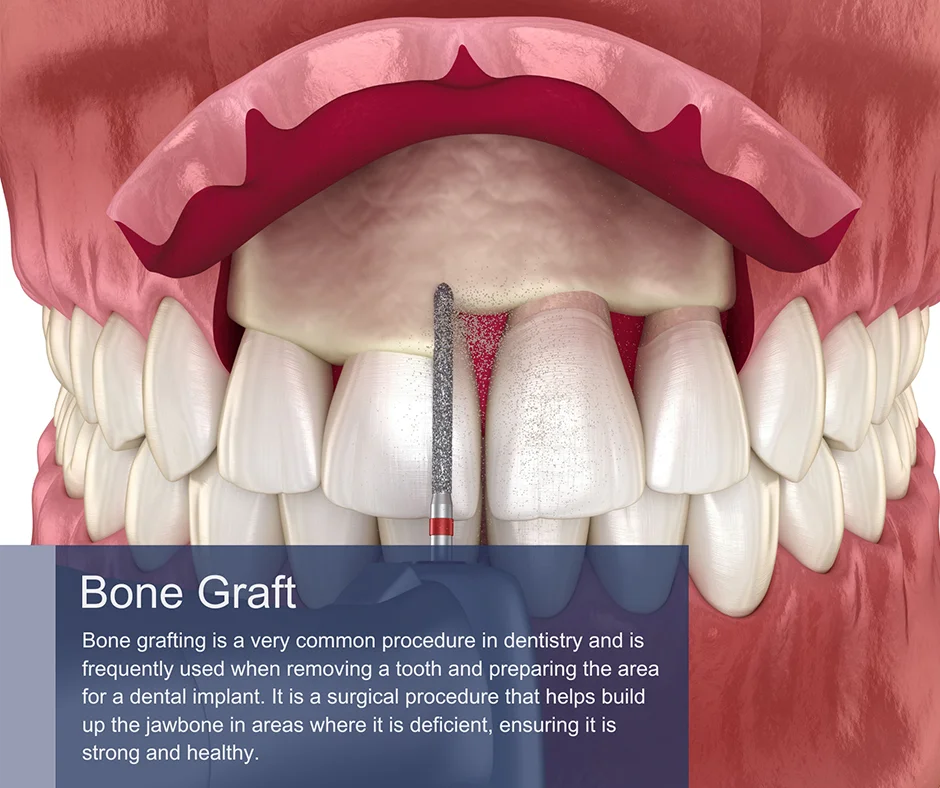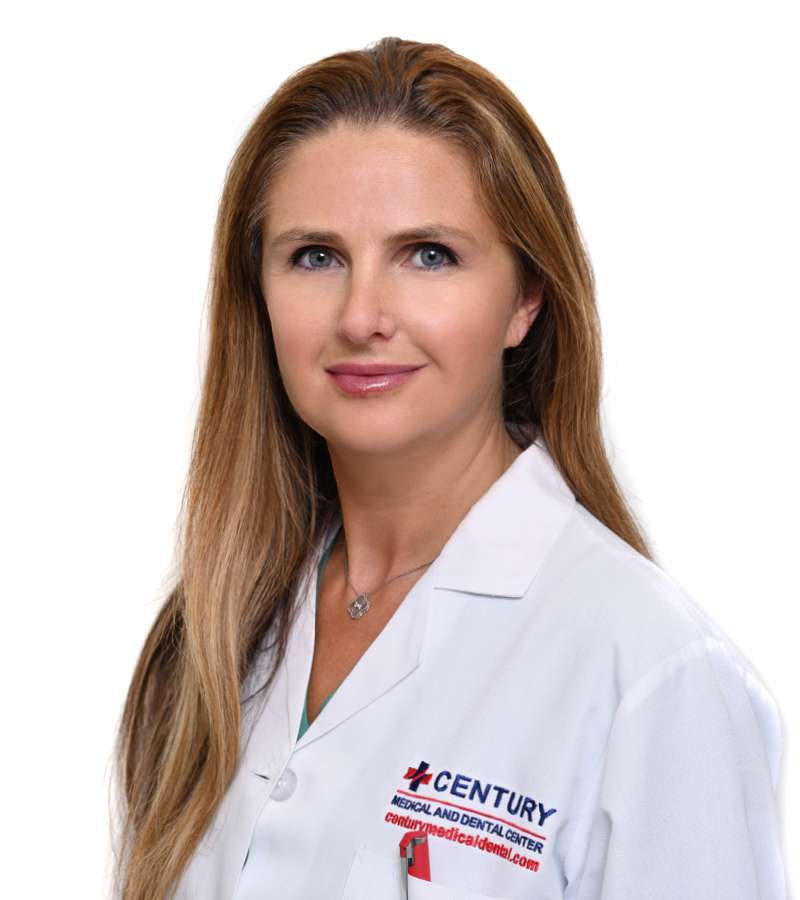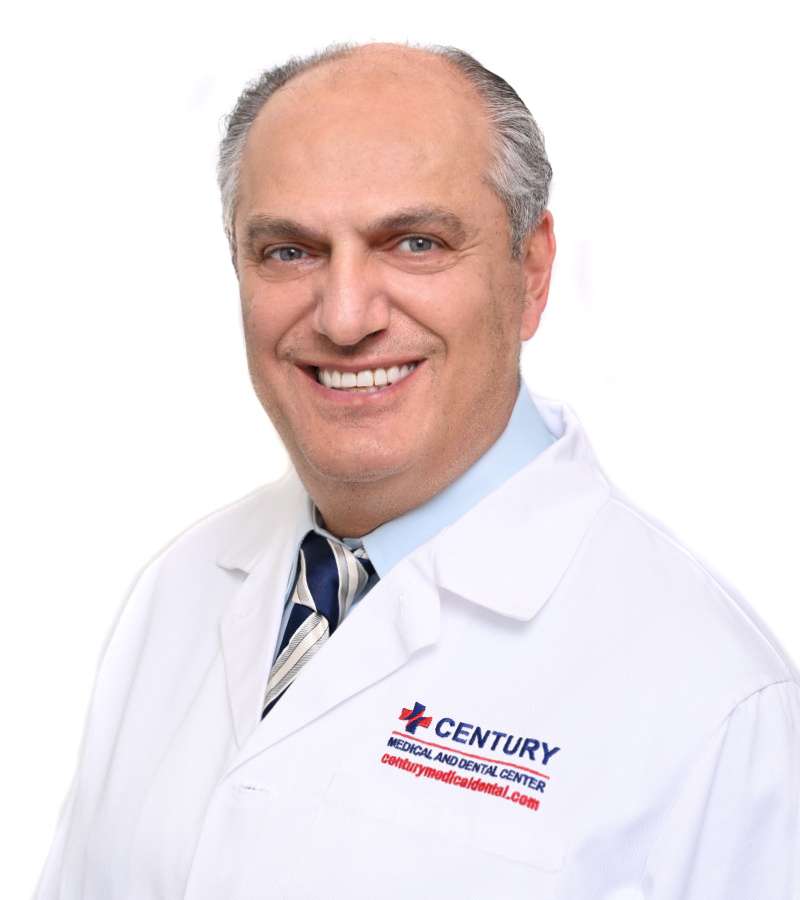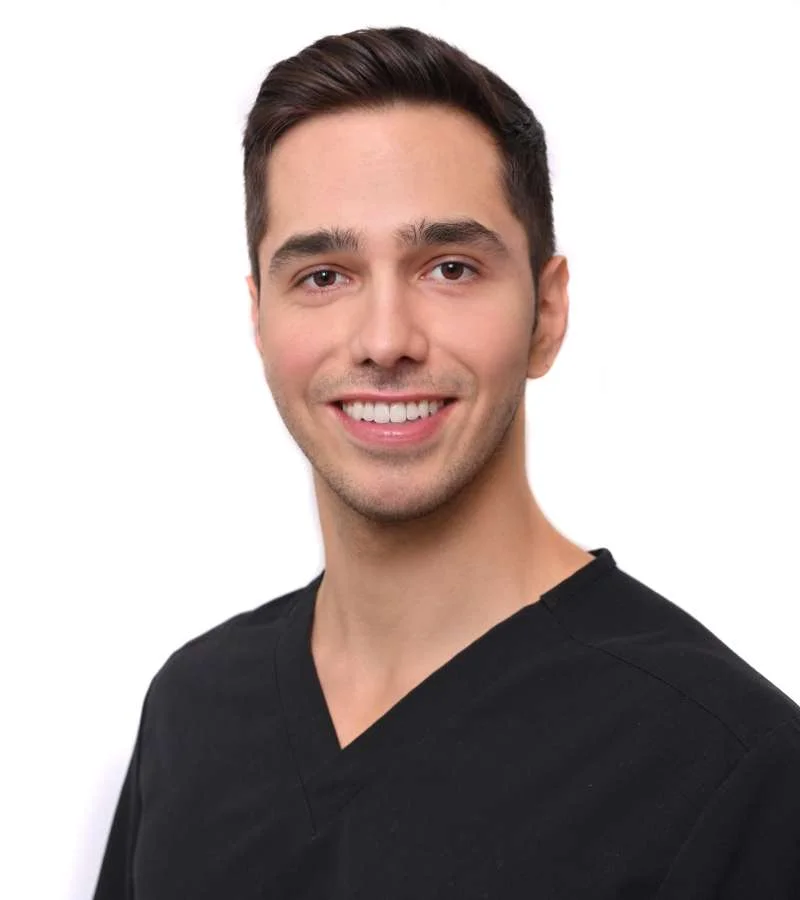Table of contents
Bone grafting is a very common procedure in general dentistry and is frequently used when removing a tooth and preparing the area for a dental implant. It is a surgical procedure that helps build up the jawbone in areas where it is deficient, ensuring it is strong and healthy. It encourages your body to produce new bone cells by providing a matrix or framework on which the new cells can be deposited.
A dental bone graft is necessary if you have areas where your jawbone is naturally thin or has been destroyed. For example, if you have advanced gum disease or periodontal disease, this condition can destroy the jawbone surrounding your teeth and is a frequent cause of tooth loss.
People who lose their upper back teeth often need a sinus lift or sinus augmentation, a bone graft to build up the bone in this area because it is closest to the sinus cavities. Often there is insufficient bone to place dental implants safely. Jawbone loss can also occur due to trauma or when teeth were removed many years ago. After natural teeth are removed, the jawbone soon begins to resorb, so it gradually becomes thinner, and the bony ridge that used to support your teeth becomes narrower.
When you visit Century Dental for dental implant surgery, we need to assess the quality and quantity of your jawbone using a cone beam CT scan. This 3-D scan enables our dentists to quantify the amount of available bone and its quality. Dental implants are surrounded by a specific amount of strong and healthy bone so they can begin to fuse with this bone, creating a firm anchorage point for new implant teeth. We can discuss bone grafting if you don’t have enough bone to support dental implants.
See all our procedures:

During a dental bone graft, new bone is inserted into areas where it is deficient. Gradually the bone graft begins to fuse with your existing bone, and the process encourages your body to produce new bone cells, so eventually, the graft is replaced by your own bone. Several types of bone grafts are available, depending on the location of the deficiency in the jawbone.
Sometimes it is possible to carry out tooth removal, bone grafting, and implant insertion at the same time, depending on the amount of bone grafting material needed. Everyone has unique oral health needs, so we will evaluate your jawbone carefully to decide the best way to proceed and ultimately achieve optimal long-term results.

Family Dentist
Brooklyn
Gravesend

Family Dentist
Manhattan
Manhattan

Family Dentist
Brooklyn & Manhattan
Manhattan, Downtown

Dentist
Brooklyn & Manhattan
Gravesend, Manhattan, Downtown

Dentist
Manhattan
Manhattan

Dentist
Brooklyn & Manhattan
Manhattan, Livingston

Dentist
Brooklyn & Manhattan
Manhattan, Livingston
Several types of bone grafting materials can be used, including the following.
Autogenous bone grafts: these bone grafts are also known as autografts and use your own bone taken from another site in your body. The advantage of an autograft is that it will integrate well, and healing can be faster since your body will recognize it as your own bone. However, it can mean a second surgery is needed to harvest the bone.
Allogenic bone: these bone grafts, also called allografts, use bone from a human donor. The bone doesn’t produce any new bone cells but serves as a matrix or framework so your body can deposit new, healthy bone cells onto the matrix, filling in any deficiencies. The bone is extensively tested and treated to ensure it is safe.
Xenogenic bone: these bone grafts are taken from a different species and are normally bovine. The bone is sterilized and extensively treated, so there is no risk of contamination or rejection. Just like an allograft, a xenograft forms a matrix so your body can build new bone cells, filling in areas where it is deficient.
Artificial bone graft: an artificial bone graft uses synthetic and demineralized bone matrix materials that often contain growth factors, collagen, and protein to encourage new bone growth.
When you visit us, we can discuss each possible bone graft in more detail, helping you decide which will best suit your needs.
A dental bone grafting procedure is straightforward, and we will ensure your jaw is fully numbed using a local anesthetic or sedation dentistry if necessary so you feel comfortable and relaxed. We will need to make a small incision into the gum to expose the bone underneath to place the bone graft in the right area.
The exact procedure depends on the bone graft required. For example, if you need a sinus lift, we make a small incision into the jawbone so we can see the sinus membrane and gently lift it upward. The resulting space is then packed with bone grafting material, and the gum is stitched over the bone and left to heal. If you require a ridge augmentation, the bone may be placed as a block and secured with special screws. If we carry out a socket preservation procedure, we can remove the failing tooth and pack the empty socket with bone grafting material before stitching up the gum.
You will most likely be numb for several hours afterward. After the anesthetic wears off, you may experience some minor discomfort, bruising, and swelling. All these side effects are perfectly normal and should begin to disappear after a few days. Over-the-counter pain relief should be adequate to control any discomfort; otherwise, we can prescribe something stronger. We may also wish to give you some antibiotics that should be taken as prescribed.
During these first few days, you may also notice some small fragments of bone leaking out of the bone grafting site, which isn’t usually a problem, but contact us if you are at all concerned. We will also give you precise instructions on how to care for your mouth during this time out to clean it without disturbing the grafting site and what best to eat for the first few days afterward.
Thorough efficient and knows his stuff. Felt good...Smile even better...
Following our instructions will help ensure your recovery is as smooth and quick as possible. Ensure you eat well and get plenty of rest so your body has all the nutrients needed to speed up healing. Certain bone grafting materials contain growth factors and other elements that help healing proceed more quickly, but otherwise, you just have to let nature take its course.
Although you can return to work and everyday activities soon after receiving a bone graft, it will take several months for the graft to heal completely and fully integrate with your natural bone. The precise recovery time needed after a bone graft depends on the extent of the graft and the area in which it was placed, and your body’s ability to heal.
The cost of a bone graft depends on the amount of bone grafting material needed and the complexity of the grafting procedure. It also depends on whether you need sedation dentistry or feel comfortable with a local anesthetic. We can provide an accurate estimate when you visit Century Dental.
Your bone graft could last for life; this procedure is generally very safe. However, with any form of oral surgery, there is always a small element of risk. Potential risks include infection, nerve damage, bleeding, and, extremely rarely, an infection from donated bone, but this bone is meticulously prepared to almost eliminate this risk. There is also a risk that the bone may not integrate well with your natural bone, which can depend on your overall health.
We take extensive precautions when screening people for a bone grafting procedure, reviewing your dental and medical history, and discussing potential risks with you, so you can understand precisely what is required and how we work with you to reduce these risks. For example, if you have diabetes, we will need to ensure it is well controlled, and if you smoke, you must quit at least for the duration of healing.
Initially, it might be a little concerning to learn you need a bone graft, but you can rest assured it is a straightforward process that we have successfully carried out many times. The results are well worth the effort and time needed, ensuring dental implant surgery is more successful and that the outcome is more aesthetically pleasing, with strong and stable implants that will last many years.
Century Medical and Dental Center is an accredited healthcare facility in NY that operates in accordance with Article 28, a public health law. This law regulates and recognizes accreditation for public healthcare facilities, ensuring they are licensed and operated correctly. By undergoing the Article 28 process and achieving accreditation, Century Medical and Dental Center demonstrates its commitment to meeting the highest standards of care.
As a multidisciplinary medical center, we have highly qualified doctors, nurses, and support staff who are working hard to provide the best medical care to patients in Midtown Manhattan, NY, Downtown Brooklyn, NY, including Brooklyn Heights, Dumbo, Prospect Heights, Park Slope, Clinton Hill, Boerum Hill, Red Hook, and Bedford-Stuyvesant.